Below you can read my detailed
career biography, whilst to the right there is a short
bullet-point summary. The detailed version, while more lengthy, is probably
rather more interesting and I have also included, in the
panel on the right, images of a number of the products
that I have been involved with during a varied career
across a number of different technology fields. Bear in mind that
many of the companies now no longer exist or have been swallowed up
in takeovers and acquisitions. Many of the images are of their time,
which spans several decades. What was pioneering, cutting edge
technology then is often commonplace now.
 |
 FieldTech FieldTech
|
After gaining my degree, I began my career
as an engineer in an avionics (radio, radar, navigation)
repair and overhaul workshop and was quickly promoted to
Service Manager, with responsibility (including P&L)
for running the entire Avionic Service Centre, with over 30
engineers plus support staff. The centre served the
commercial airline, general aviation and military sectors
and also maintained airborne rescue beacons and
communications jamming systems. The company itself also sold
Bendix avionics and IFR specialised avionics and comms
test equipment, which they also used in their own
workshops.
The Hunting
Group, which owned Fieldtech, was (and still is, to an
extent) a large company with smaller companies within it, involved
in a number of different business areas. A decision was
made to rationalise the naming policy for much of the
Group so that many of the individual company names were
changed to incorporate the Hunting name. Thus Fieldtech
became Hunting Avionics.
 |
 Hunting
Avionics Hunting
Avionics
|
A number of new projects had just started
and the company wanted to create a department to run
these and take advantage of opportunities to sell
customised versions of their existing products and to
develop new ones. I created that department (Technical
Support Services - TSS) from scratch. Thus I became
involved in the early days of GPS and, in collaboration
with Magnavox, we designed a portable version of their GPS based timing
station to provide the master sync clock for the
frequency-hopping secure radio "Have-Quick II"
system. This was initially deployed during the South Atlantic
Conflict and subsequently in a number of other locations.
The company
was also awarded a contract to introduce, and become UK
design authority for, a Station Keeping Equipment
navigation system (SKE), designed and manufactured by
Sierra Research Inc. (now Leonardo-DRS) to be fitted
to the RAF Hercules (C130) fleet to enable them to fly in
close formation in bad visibility. The system was also
capable of locating downed aircrew using a personal
location beacon activated by the searching aircraft. My
team designed and built a special transportable version
of the aircraft system that could be fitted to
helicopters and other aircraft at short notice to enable
search and rescue missions. We also liaised with UK MoD
on the installation and commissioning of the Hercules
systems, including the flight trials. During this time, I
also designed and wrote the software for an intelligent
controller to turn IFR (now Viavi) Spectrum Analysers and Communications
Service Monitors that the company sold, into an effective
tool for the DTI Radio Investigations Branch mobile
surveillance units to trace and log pirate radio
transmissions. I also ran training courses for the
combined system.
As an
adjunct to its main business, the company also had a
division that sold security products (perimeter sensors,
etc). I was involved in this too and conceived a
pioneering design for a digital-multiplexed security
monitoring, control and display system. I was also
responsible for running the design and development
programme, much of it being sub-contracted, to turn the
design into reality (CMS-2000). This was very successful
and was installed in many locations, both civil and
military, including CDE Porton, Coulport Nuclear
Submarine Base, British Gas Storage Depots, Aztec West
Business Park, UCL and Guernsey Fire & Police to name
just a few. I was heavily involved in the sale,
installation and support of all of these.
At that
time the company had also started to become involved in
In-Flight Entertainment (IFE), initially designing
systems for the BAe 748/ATP aircraft and the Chinook
helicopter for North Sea operations. They then developed
a prototype in-seat video player (for use in 1st Class
long-haul seats) and were subsequently awarded a contract
to equip the whole British Airways (BA) long-haul fleet.
Hunting then needed a manufacturer for the system and so
they bought a small in-flight video company (Curtis &
Green) which they later renamed Hunting In-Flight Systems.
 |
 Hunting
In-Flight Systems Hunting
In-Flight Systems
|
Hunting IFS made and assisted with the
installation of systems for numerous customers including
British Airways, United Airlines, Cathay Pacific and
others. They also started a division, which I lead, to
develop their systems for VIP and Corporate aircraft. I
transferred there to apply my skills and data-comms
experience, gained with the security monitoring and
control system, to the new IFE systems. Initially I lead
the team that applied this to the first interactive seat-back
screen IFE system, which was trialled on the BA long-haul
fleet and which you can see developments of today on most
long-haul airlines. I also applied the data-comms
techniques to a new corporate/VIP IFE system.
A whole new
generation of equipment with LCD touchscreen control
units was designed, well in advance of anything else on
the market at the time. The lower range became standard
equipment on several corporate jets such as the
Bombardier Challenger 600 series and the larger VIP
systems were custom built, installed and commissioned for
the likes of the Sultan of Brunei, News International, F1
Racing, Air Force One, etc, etc. often using completion
centres (such as Raytheon/CTAS in Waco, Texas) in the USA.
I was involved at all stages from pre-sales through to in-service
support and managed both the main development teams and
liased with the commissioning team at the Waco completion centre in the
US.
The larger
systems introduced Ethernet networking (taken from my
experience managing the company IT systems, for which I
was also responsible), under-seat mini-PC's, digital
Audio-on-Demand (AoD) multi-node replay, Office-In-The-Sky
(which included Internet access using the Inmarsat
network) and other cutting edge functionality. It was so
new, that the CAA (who certifies equipment for airborne
use) had no experience of it and so my team worked with
them to develop certification standards for the new
designs. It also meant interfacing to the existing
aircraft systems (power, PA/PRAM units, etc) and carrying
out tests to ensure that it didn't interfere with the
main avionics. The company was also at the forefront of
the early Video-on-Demand (VoD) trials, in-seat laptop
power supply systems and in-seat phones (using the then GTE
Airfone system).
 |
 IEC
International IEC
International
|
Hunting Plc took the decision to
rationalise its corporate structure and sell the majority
of its commercial aviation interests. Hunting IFS, the
last part to be sold, became IEC International. The new
management, some of whom were ex-Hunting from other parts
of the Group which had been sold, had huge plans for the business and quickly
began expanding, moving into new premises several times
larger than they had occupied before. Several complex new
products, including all-digital audio and video switching
systems, were developed by my team with heavily
compressed timescales. Large numbers of new orders were
accepted.
However,
staff numbers lagged this increase, delivery dates began
to slip and quality and reliability problems surfaced in
the field. This cost the business much goodwill (not to mention
money) and the order books then began to shrink. Staff
numbers then overshot and the operation became loss-making
and slowly shrank in size again. At their height they employed
more than 120 people. By the time I departed, they were
down to under 30 and I could see that the end was not far
off. Some months later the remnants of the company and
the rights to its products were purchased, for a nominal
sum, by Intheairnet.
 |
 Pentathlon
Computer Pentathlon
Computer
|
An ex-colleague, from my Hunting days,
then offered me the opportunity to start a new business
selling Pentium and Athlon based (hence the name) PC's
over the Internet. It was to be based on the Isle of
Wight (where he was living and which had a low cost base).
I commuted down to the island on Monday morning and back
on Friday afternoon. The plan was that, once the business
was up and running, I would sell-up and move down to the
island. Things went well and, having originally started
from a single room at my ex-colleagues home (an 11
bedroom ex-hotel), the business quickly moved into its
own premises and took on some new staff.
After many
hours of hard work, things were going well for the
business and it was making good money. However, my ex-colleague
had a number of debts when we started the computer
company and now he was being pressed to repay them faster
than previously. So he and his then partner (who was the
third director) decided between them to take my share of
the business. I was voted out - without any warning. At
the time my house was on the market and I'd made an offer
on a place on the IoW. This all had to be unwound very
quickly. I left, went back to the mainland and ceased to
be involved. Some 18 months later, the company closed in
unexplained circumstances.
Meanwhile,
I turned to various self-employed consultancy activities
whilst I found a new permanent role. These ranged from
building and installing PC's to working on the design of
a life-raft deployment system for a helicopter.
 |
 Hitec
Laboratories Hitec
Laboratories
|
I secured the Professional Services
Manager role with Hitec, to organise and manage a new
team of project managers/analysts and implementation/support
engineers. When I started, they had no proper procedures
or processes, no document control and no idea if they
were making money or not. I recruited some additional
staff to fill skills gaps and set about turning them into
a proper operational unit. From my previous project
management experience, I introduced new processes,
document controls and proper activity and financial
reporting. For the first time they were working to time
plans and budgets and knew where their effort was going.
This reduced "lost" time (putting right errors,
etc) to less than half the previous levels within only a
few months. In addition to implementing systems, under my
guidance they also began generating services business in
their own right - and making money at it! I was also
heavily involved in turning round a couple of large
projects, which had run into difficulties during the
period just prior to my arrival. At least one of the clients had been
considering legal action, prior to my intervention.
After a record performance that year, general product
sales then took a turn for the worse. After one flat
quarter and a second poor quarter the MD (and co-owner of
the company) decided to make cutbacks and I was among
those who fell victim to the resulting downsizing. I must
have done something right though, as several members of
my team told me that they’d be very happy to work
for me again elsewhere.
 |
 Supportsoft
/ Consona Supportsoft
/ Consona
|
From Hitec I went to SupportSoft where I
was a Senior Consultant/Project Manager, overseeing
global virtual teams delivering the company's technology
support software to medium and large broadband Internet
Service Providers. I also worked as part of the team
defining the in-house developed 'Navigator' project
methodology. However, after a change of corporate
direction, the Enterprise Division was sold to Consona
who acquired the product portfolio to sit alongside their
existing CRM products. Development of the SupportSoft
products had slowed, prior to the acquisition by Consona,
who then attempted to define a new product roadmap
against the backdrop of a looming recession. The economic
downturn hit the business hard and the forecast revenue
growth did not materialise. Although highly regarded by
both colleagues and customers, I was amongst those let go
as the company shed almost all the staff they had gained
in the acquisition.
 |
 Enjenta Enjenta
|
Enjenta came about as a result of some discussions
between myself and another Consona colleague who was also caught in the
staff reductions. We'd been observing the trend towards customers using
social media to air their grievances and support problems, rather than
the more traditional methods of contact centre and forums. We decided to
develop a new product that would capitalise on this growing trend. I had overall responsibility for
the development of what became the Jemini Social Support Engine and
HelpWorlds Social Support Communities web-application,
which combined core user community features with many innovations
not seen before in this market. In addition
to application development, the company also has a
consulting services arm. We worked with a number of business
organisations on project delivery, customer support strategy and the use
of social networking features and tools to enhance effectiveness and
reduce cost. In the educational sector, we worked with both school and
university bodies to apply the system to class records,
homework/assignments and help communities. However, after a few years it
had become clear that we were a small fish in a very big pool and
whatever traction we had achieved was not going to be sufficient to
ensure the continued survival of the company.

|
 Delitech Delitech
|
At this point I decided to take the wealth of experience and
knowledge gained over many years working for others and start
working for myself. I would deliberately target the sole-trader and
small business sector and provide website design and deployment
services along with IT support and consultancy. I've since produced
websites for businesses as diverse as counselling and construction,
cafes and cleaning companies and although it's never going to make
me a fortune, I have clients I enjoy working with, on projects that
interest me, with hours that don't stress me. I have time to relax,
which at my time of life suits me just fine!
|
My Career History
in bullet points:
- Avionics
Service engineer
- Service
Centre Manager
- Technical
Support Services Manager
- Project
Team Leader
- Systems
/ Product Development Mngr
- Software
Development / IT Manager
- Internet
Startup Co-Founder / Director
- Consultant
- Professional
Services Manager
- Snr
Consultant/Prog/Project
Manager
- Co-Founder
/ Director - Tech Startups
- Web Designer and
IT Consultant
|
|
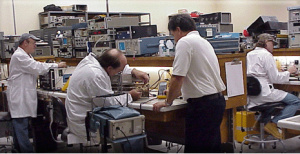
A typical
Avionics Workshop
|
|
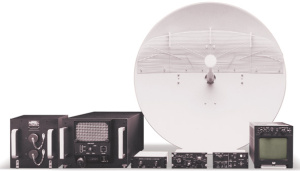
A example
of a large air transport radar system
|
|
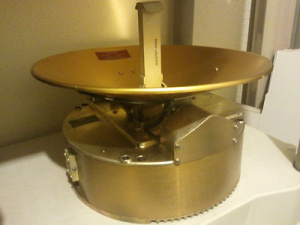
A typical
all-in-one light aircraft radar
transceiver
|
|

Early
Magnavox 6 Channel GPS Processor Board
|
|
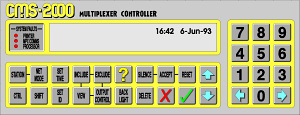
Networkable
Digital Security Monitoring Controller
|
|
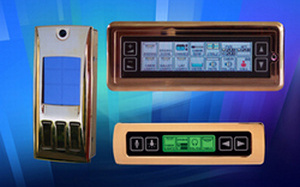
Examples of
Touchscreen Passenger Control Units
|
|
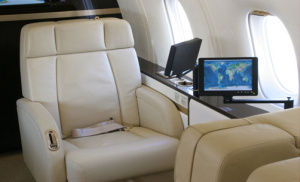
A typical
VIP aircraft interior
|
|
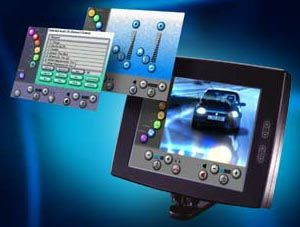
A 10.4"
Touchscreen LCD VoD/AoD Display
|
|
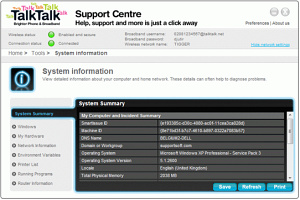
An
automated broadband support tool
|
|
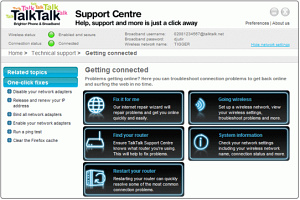
Broadband
support tool connectivity diagnostics
|
|

The HelpWorlds Social Support Web
Application
|
|

A Personal Training Website Design
|
|
A somewhat shorter, more compact
version of this
biography can be
found here.
|